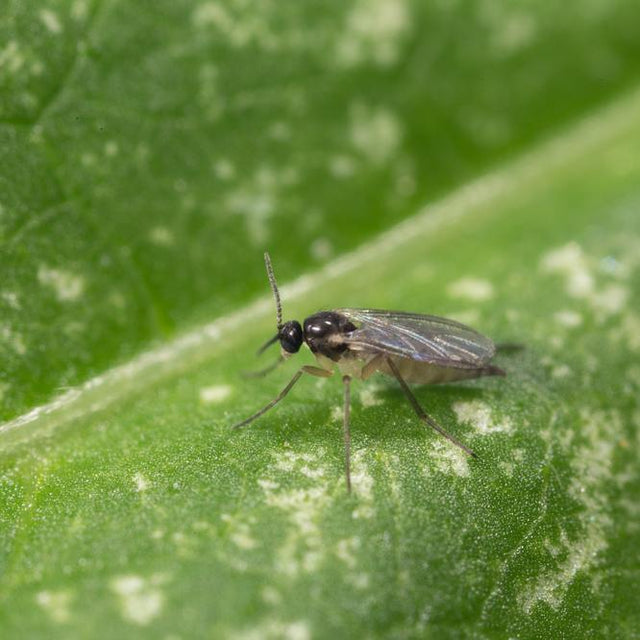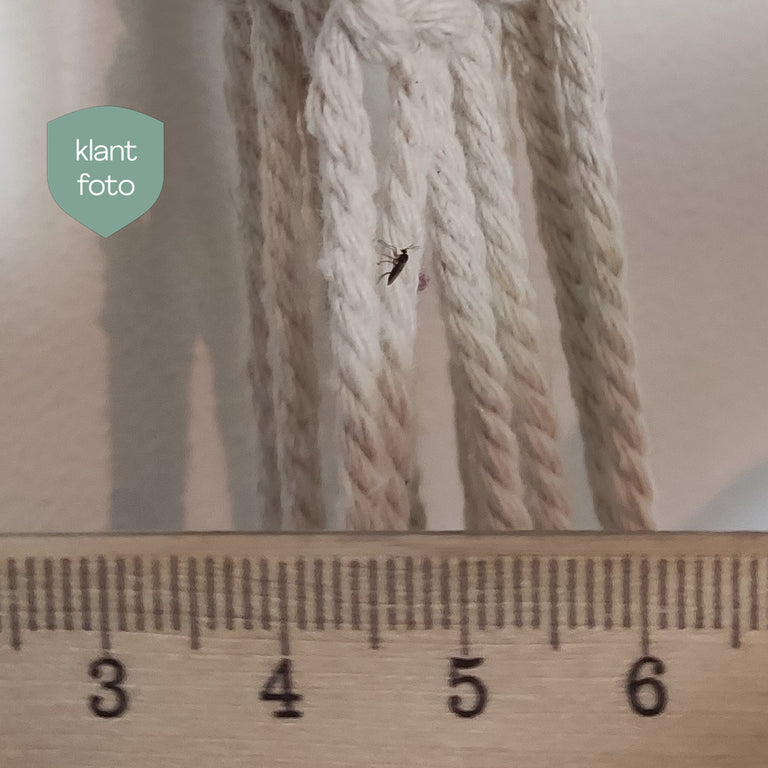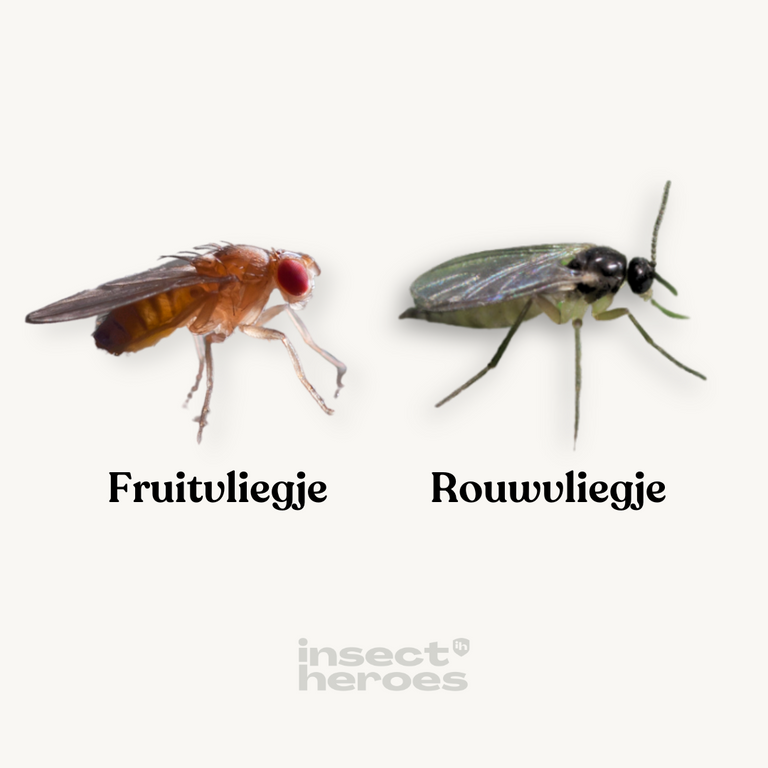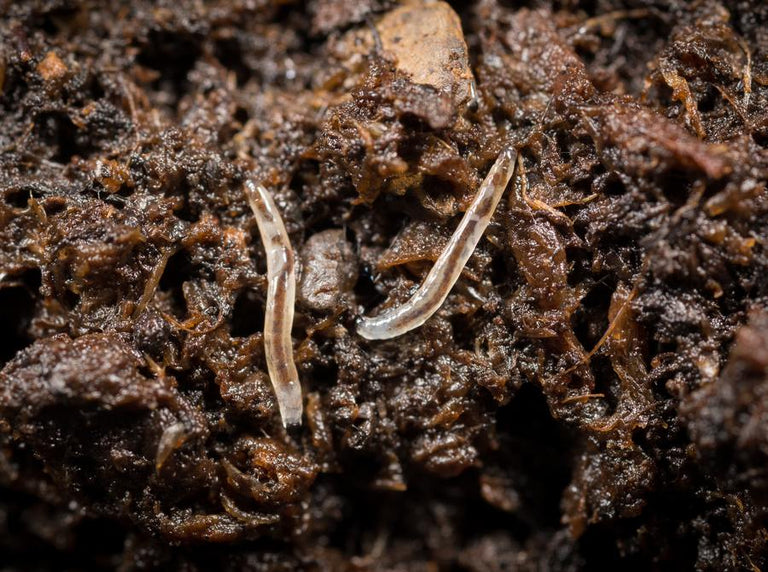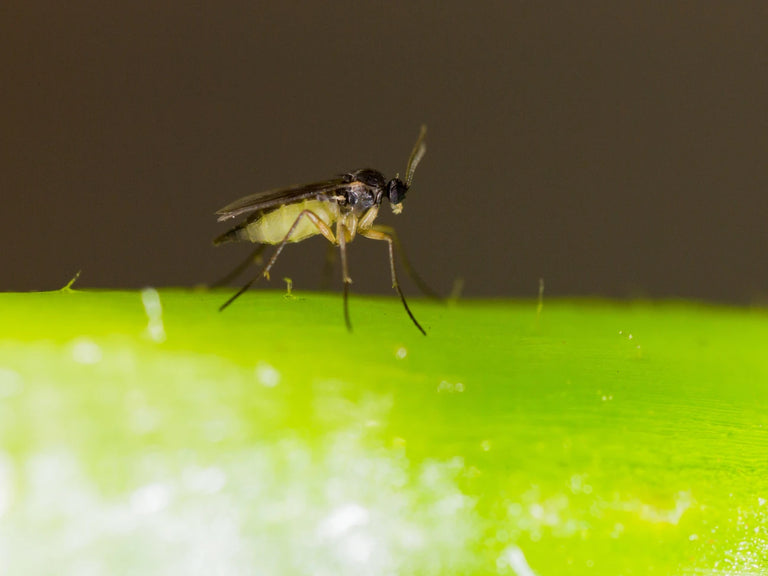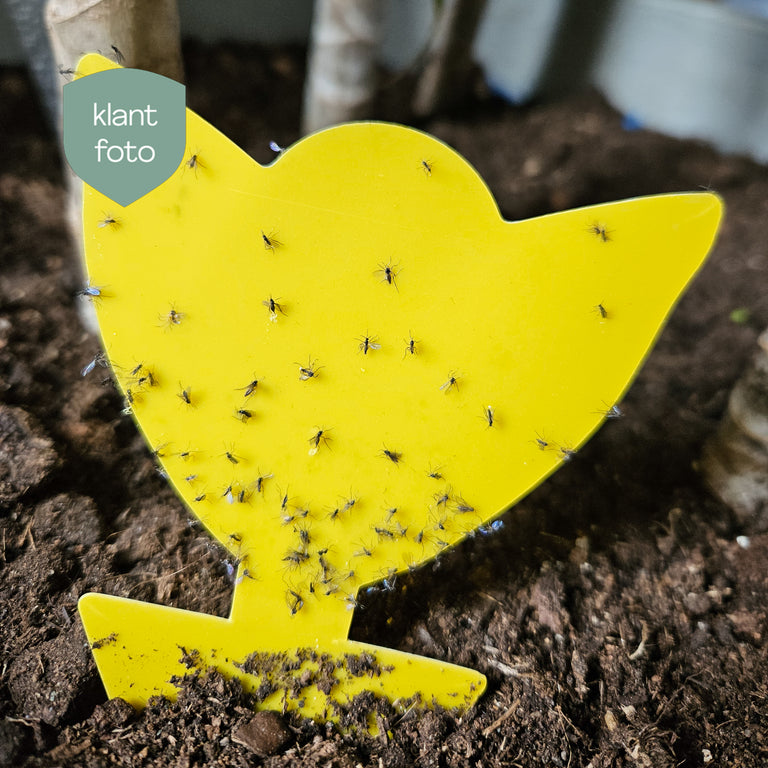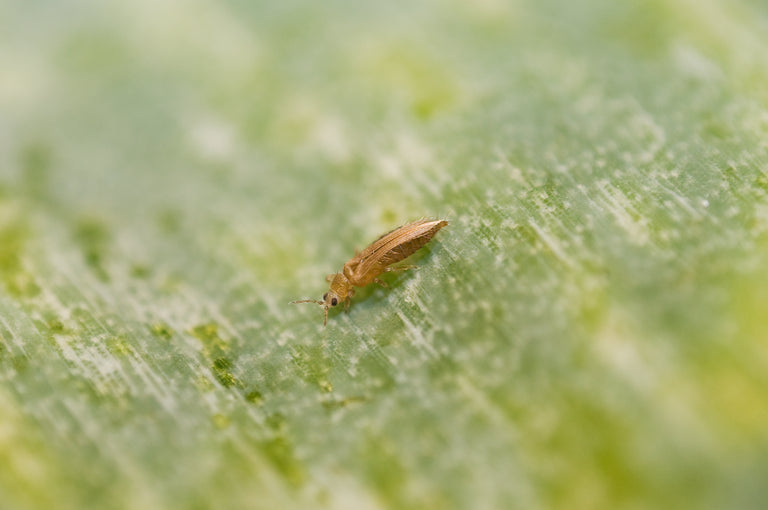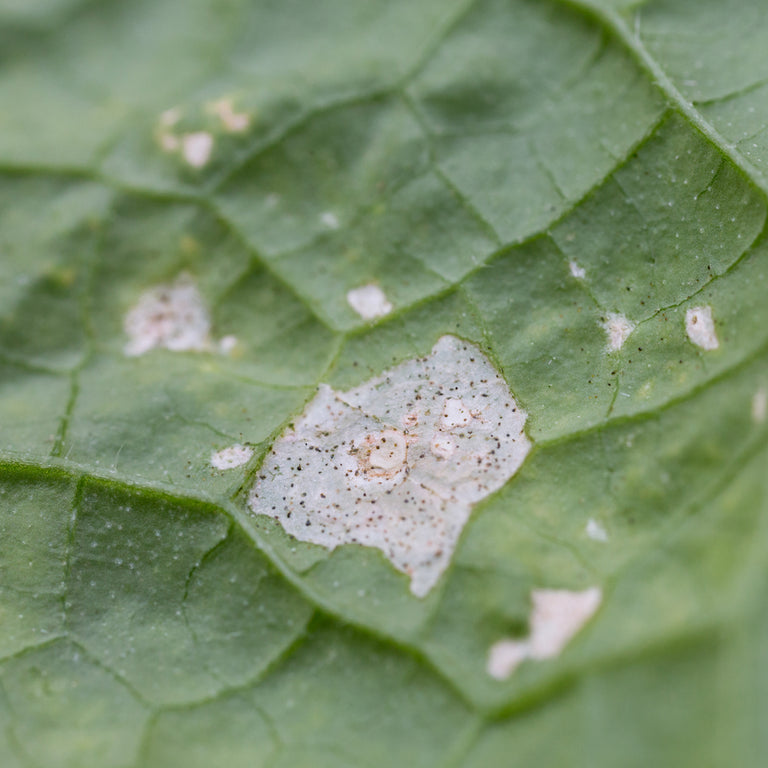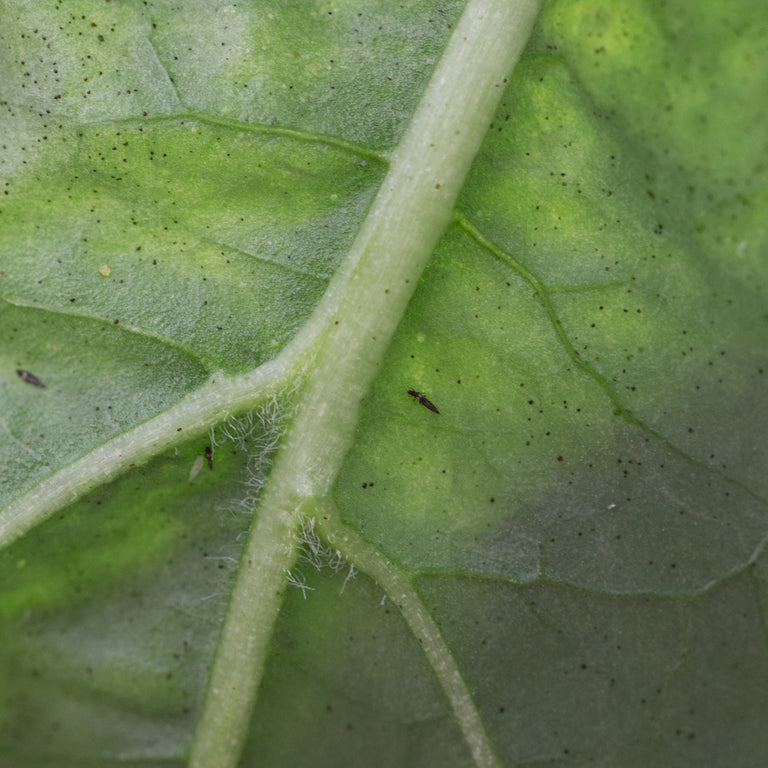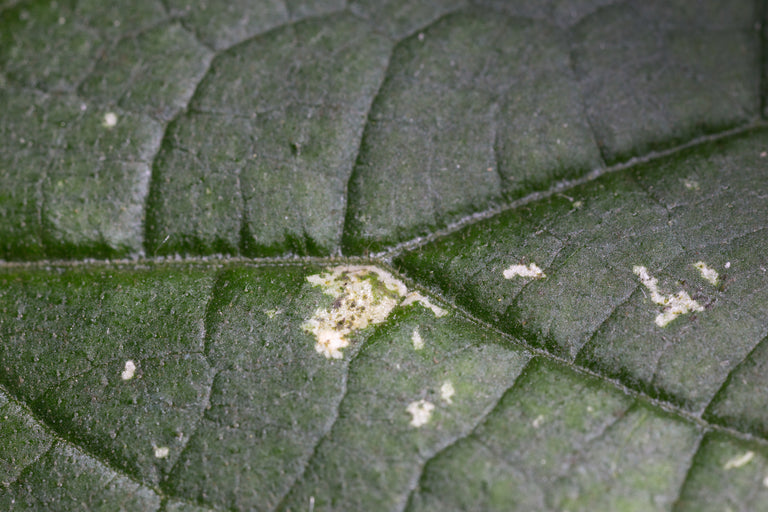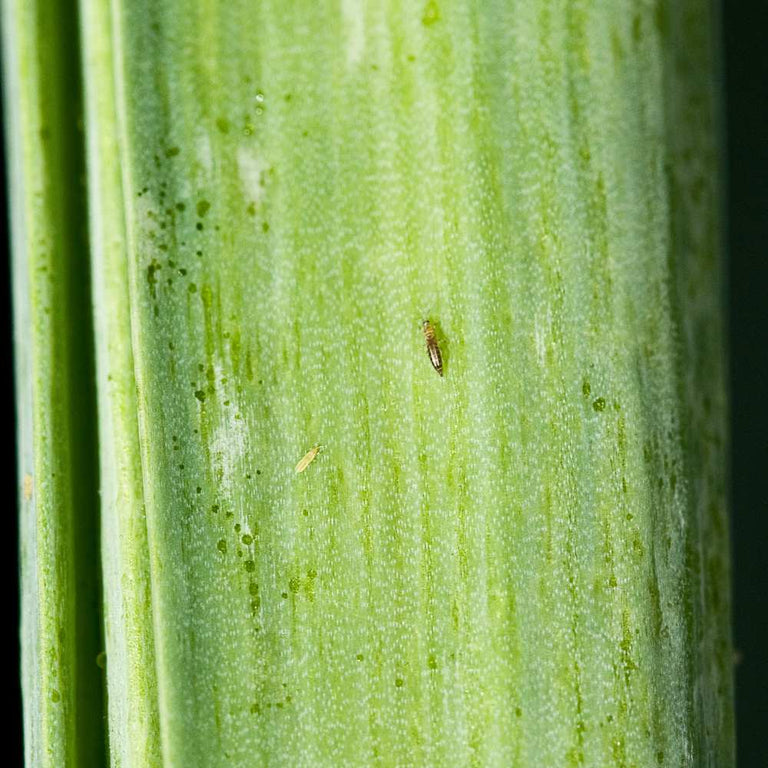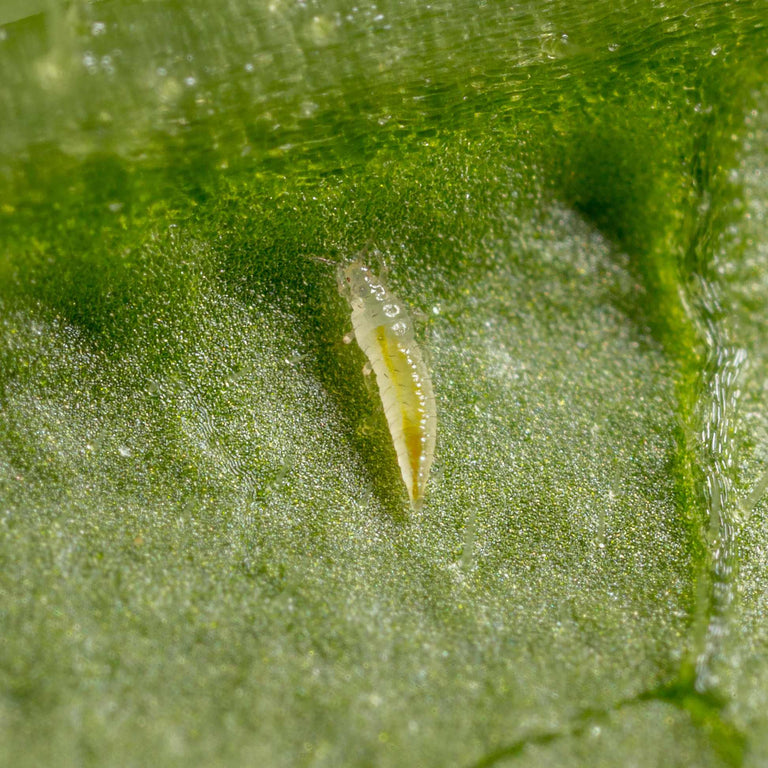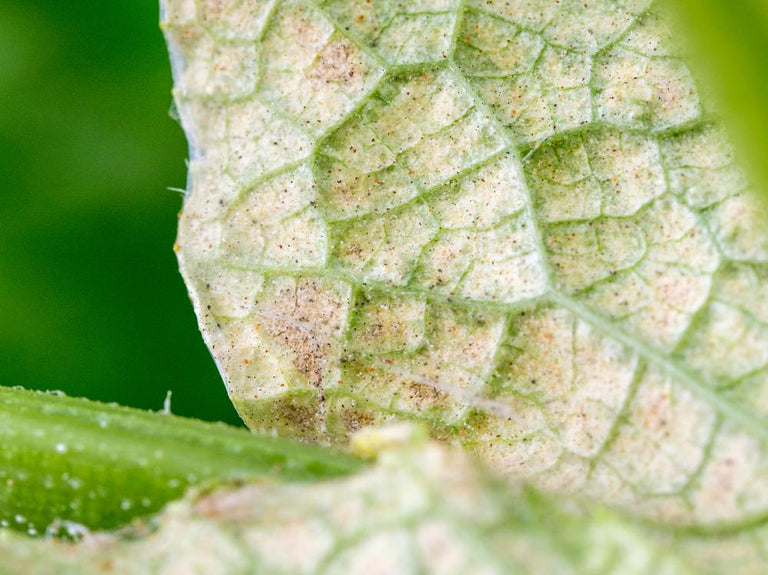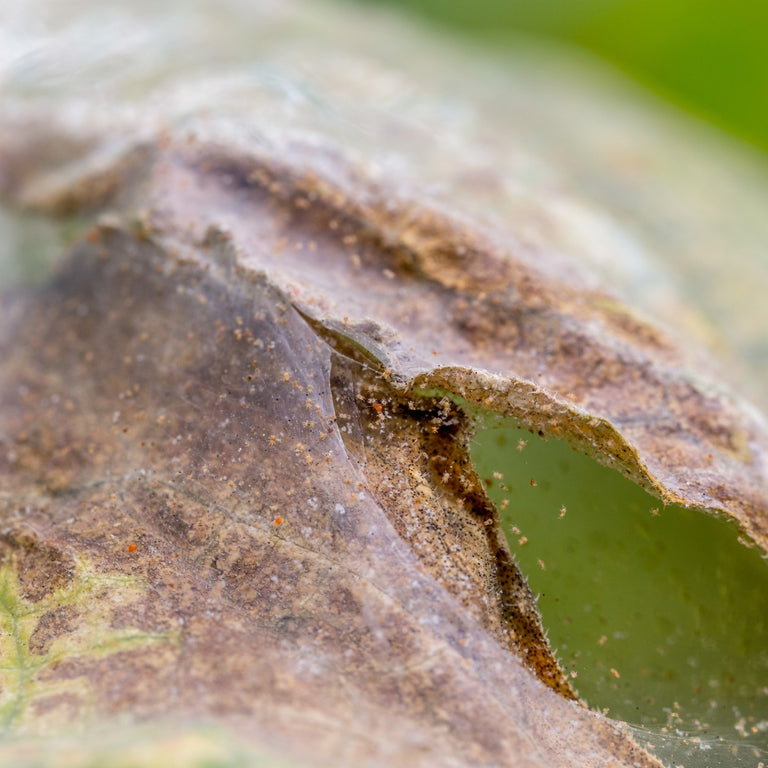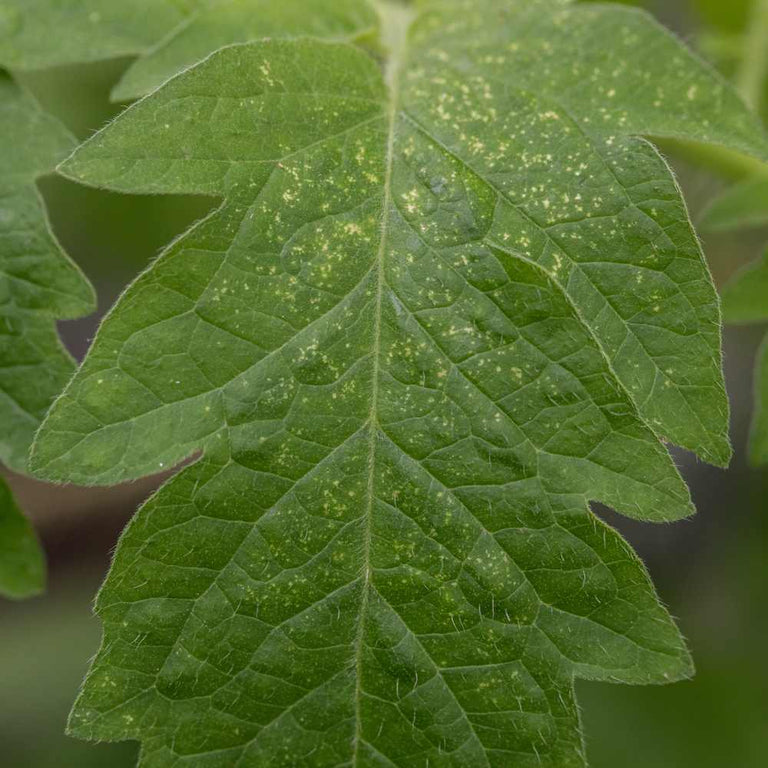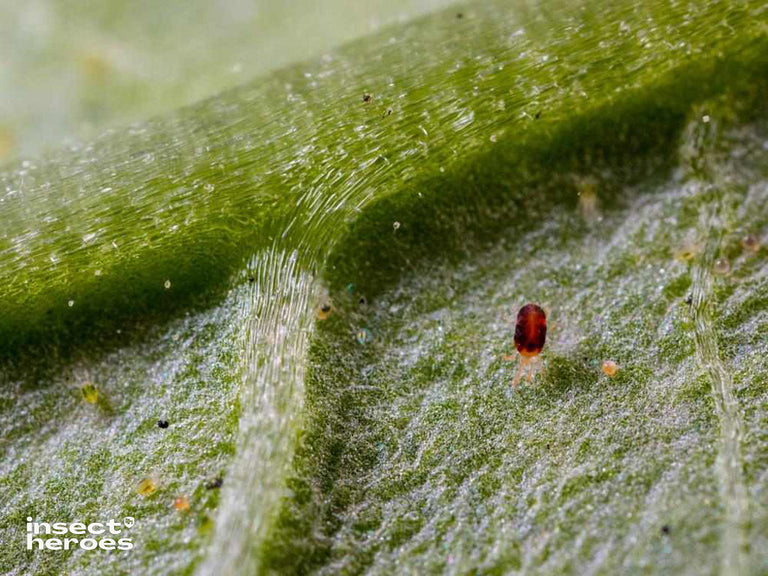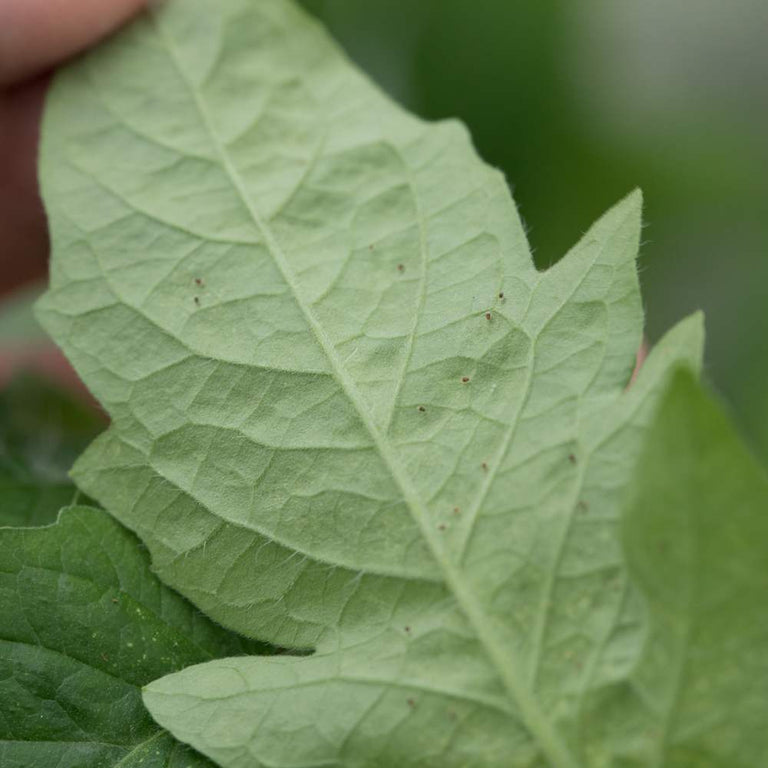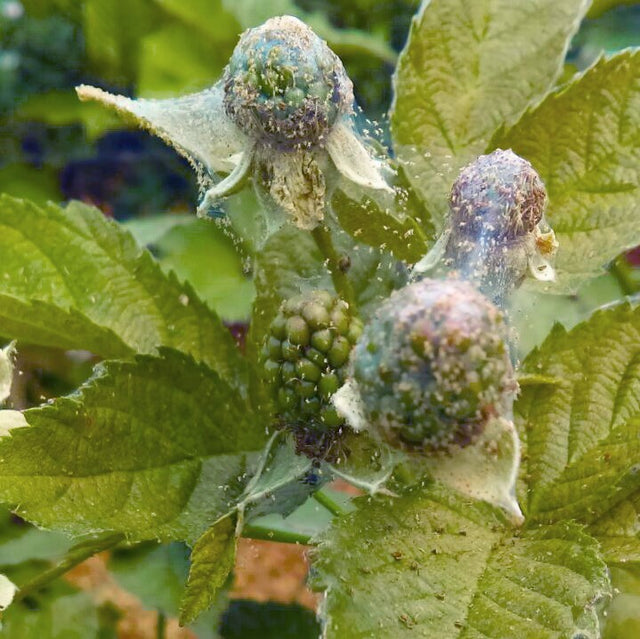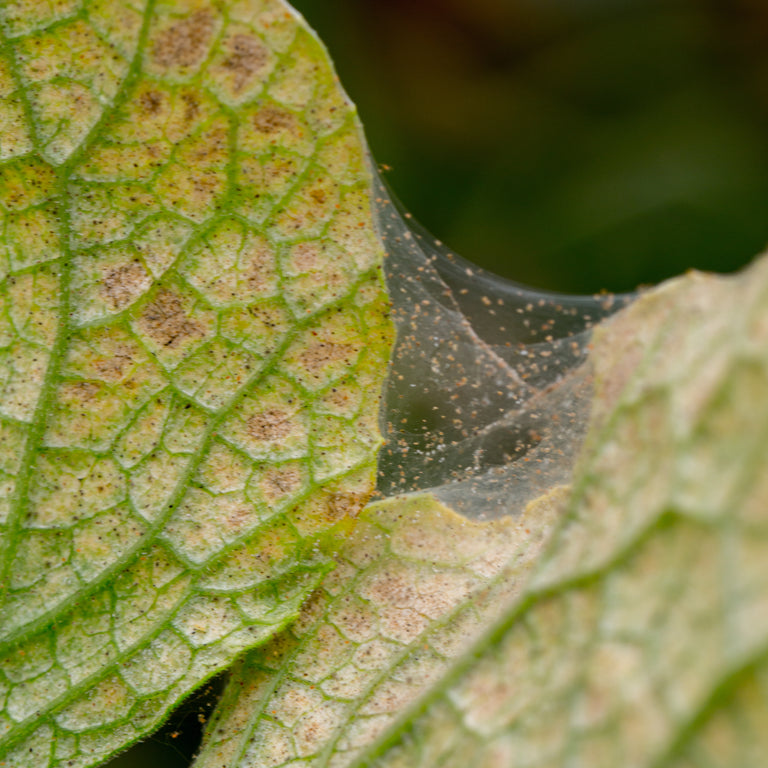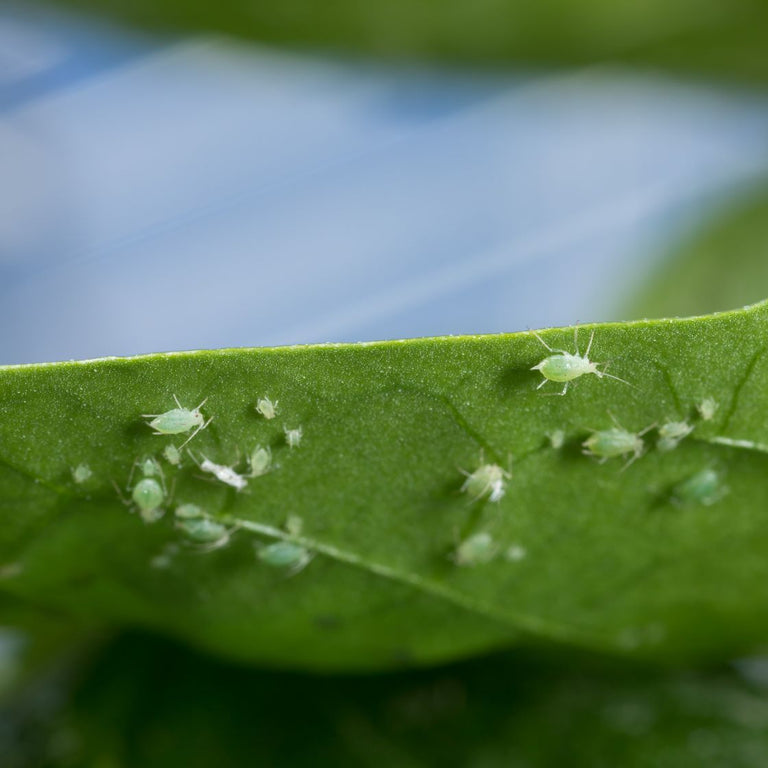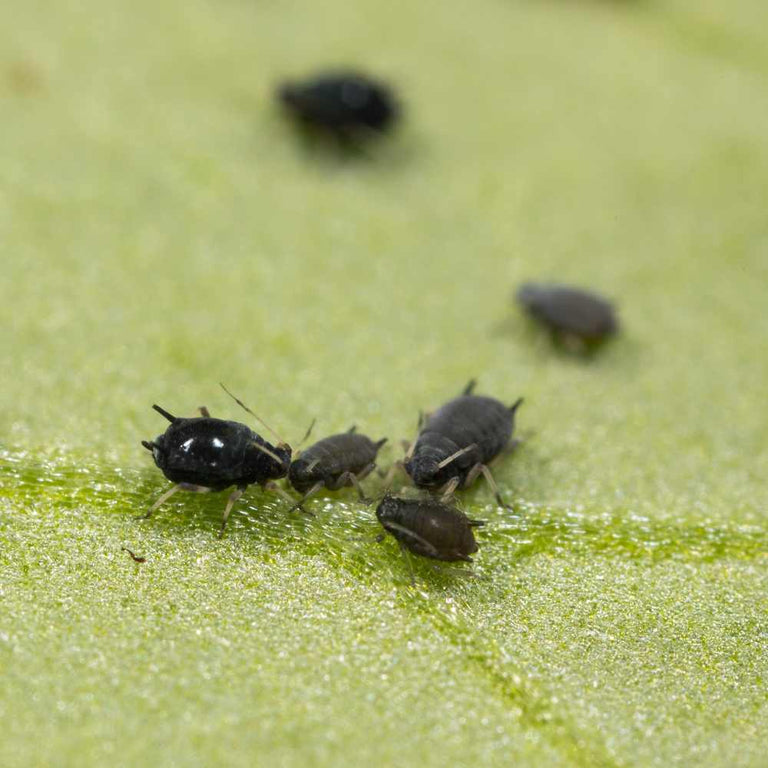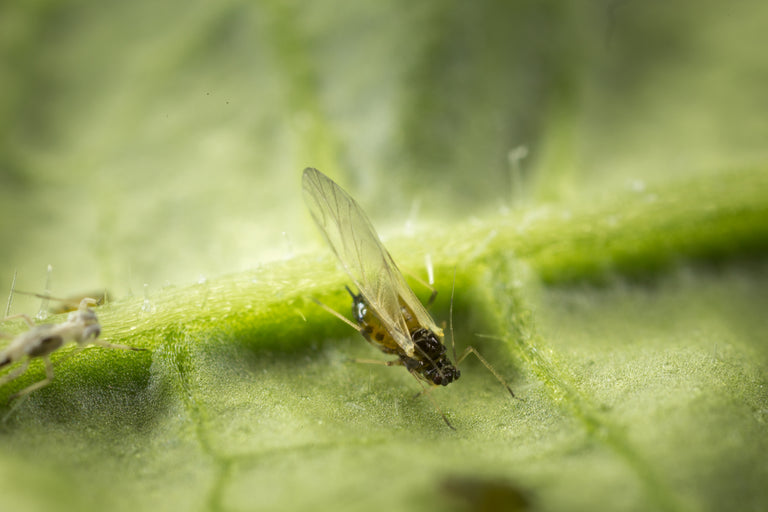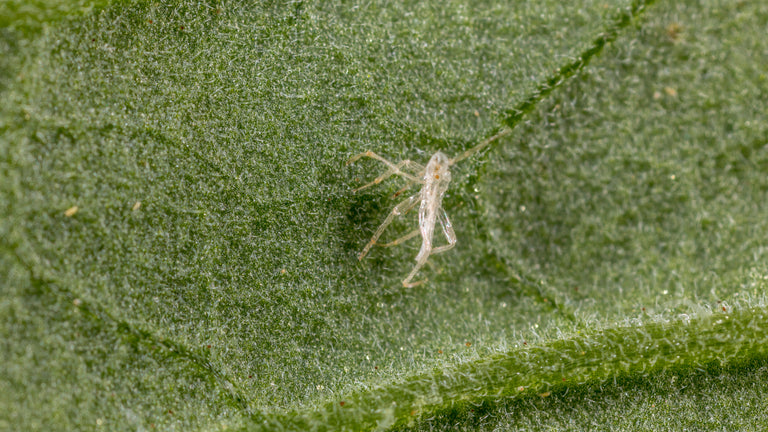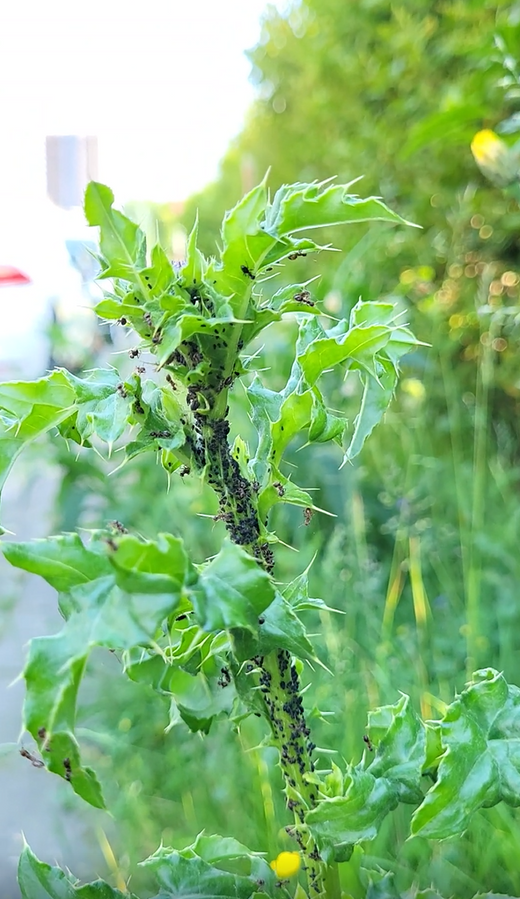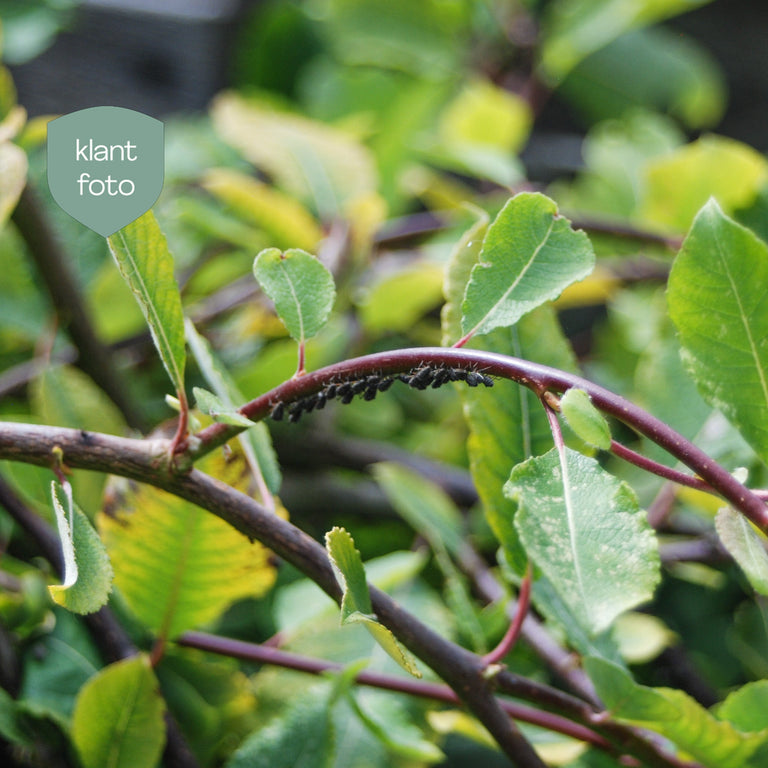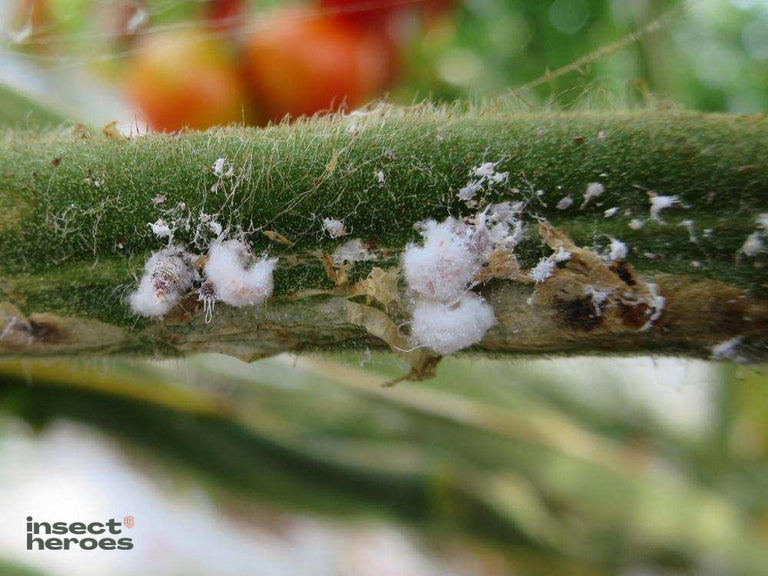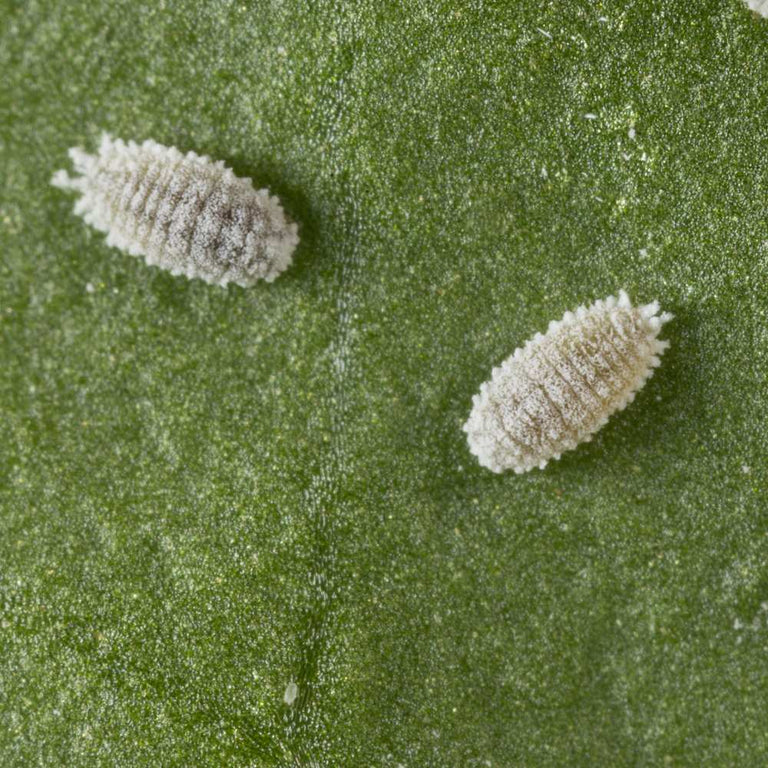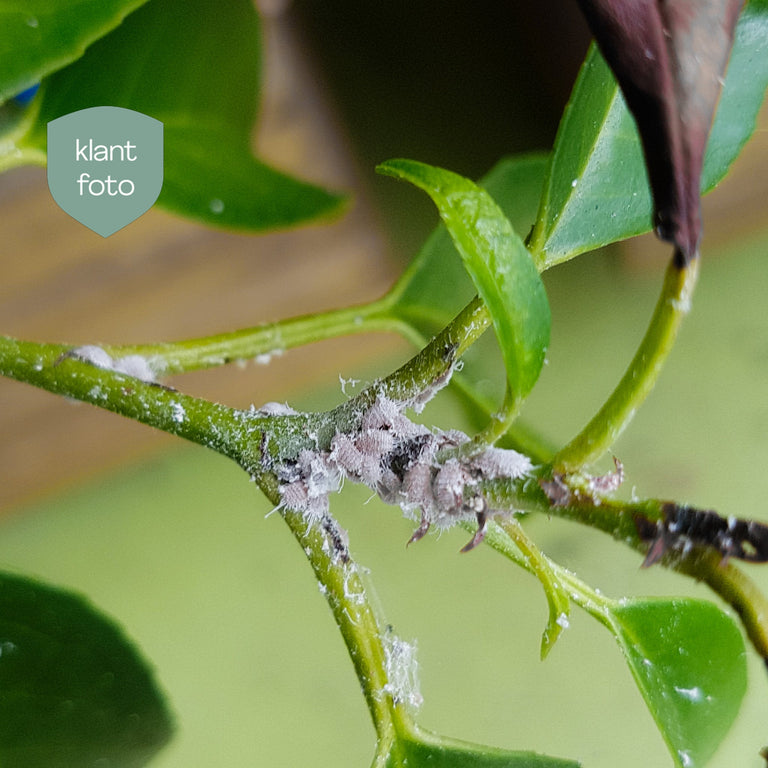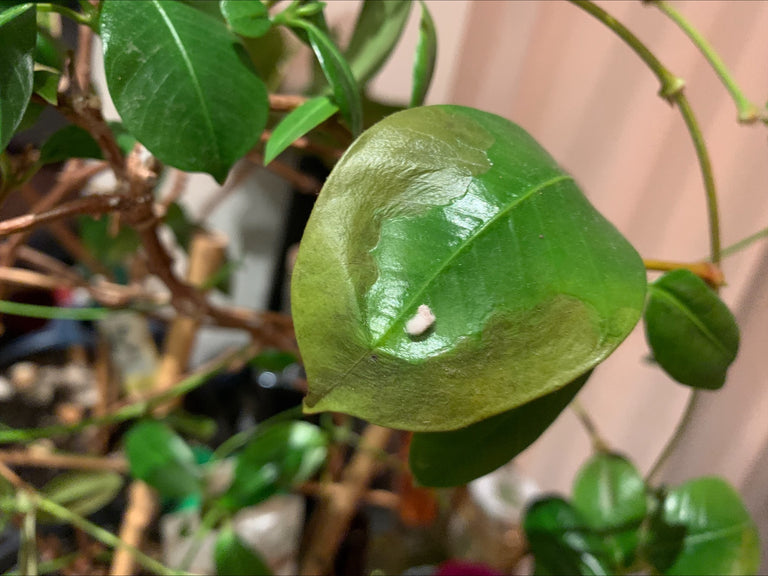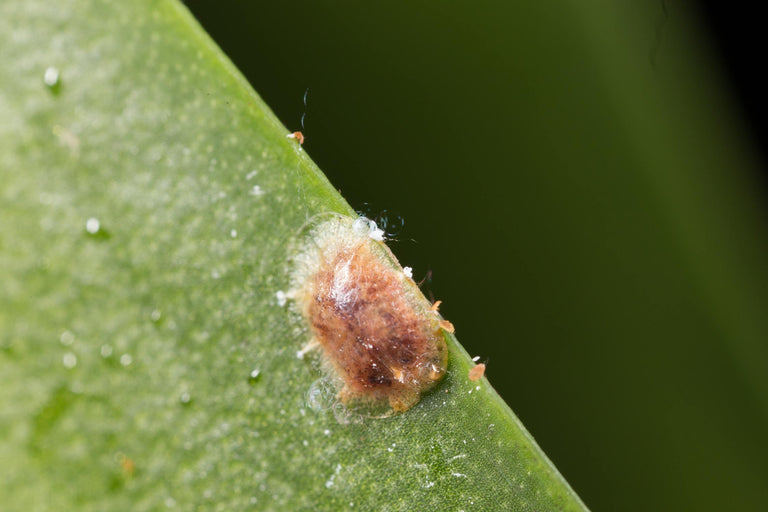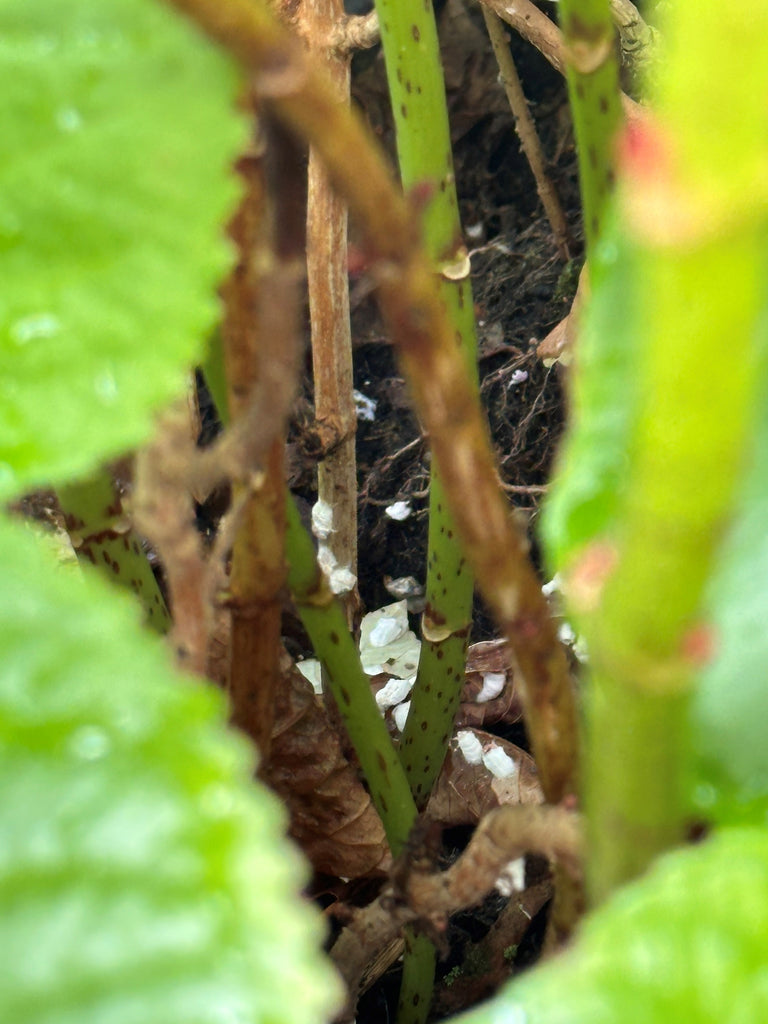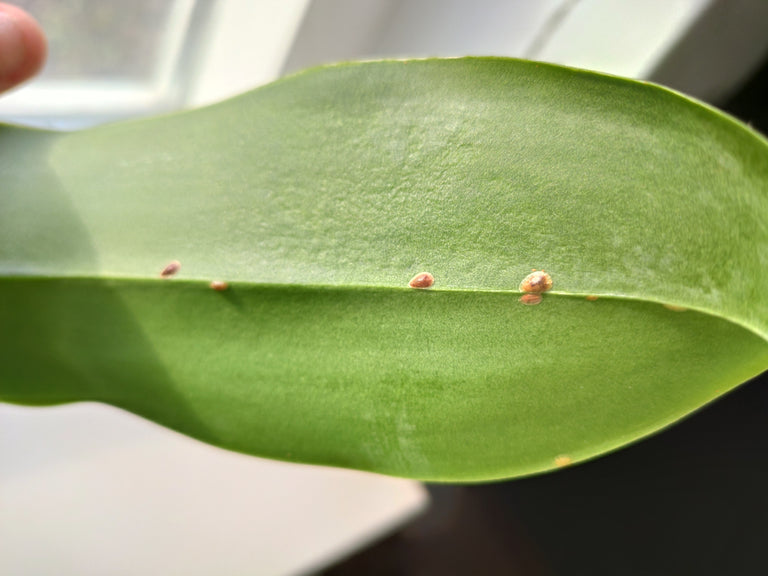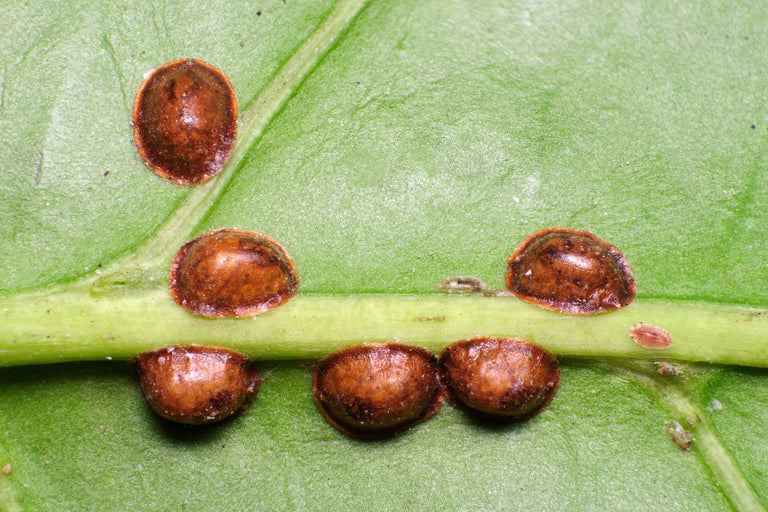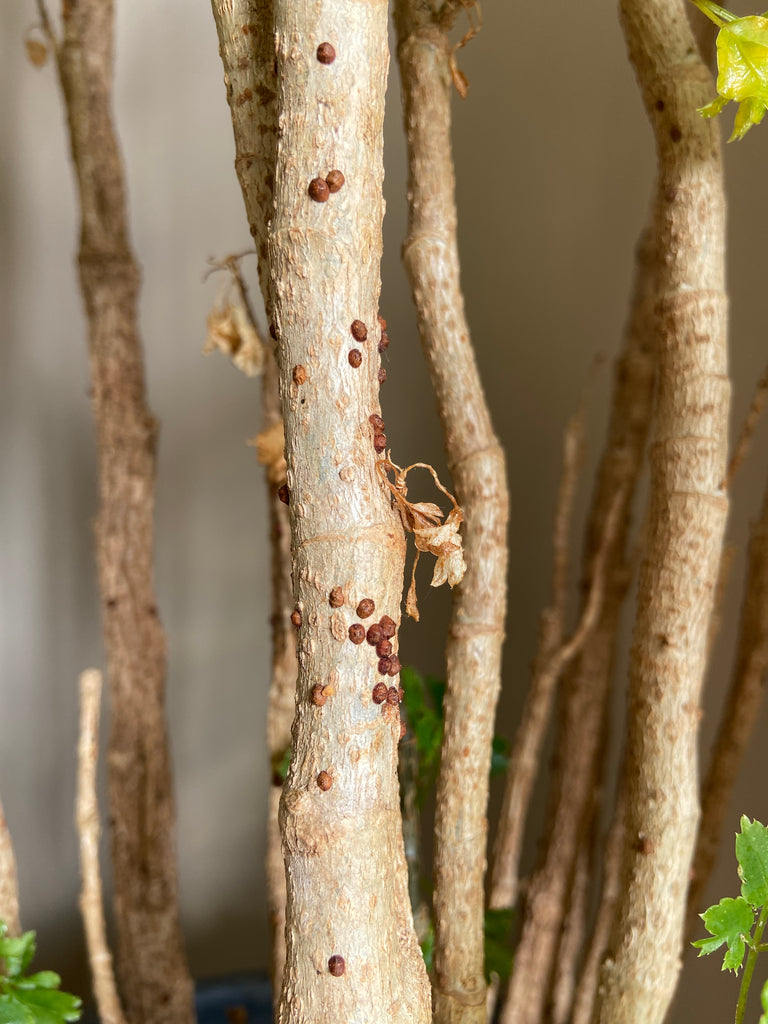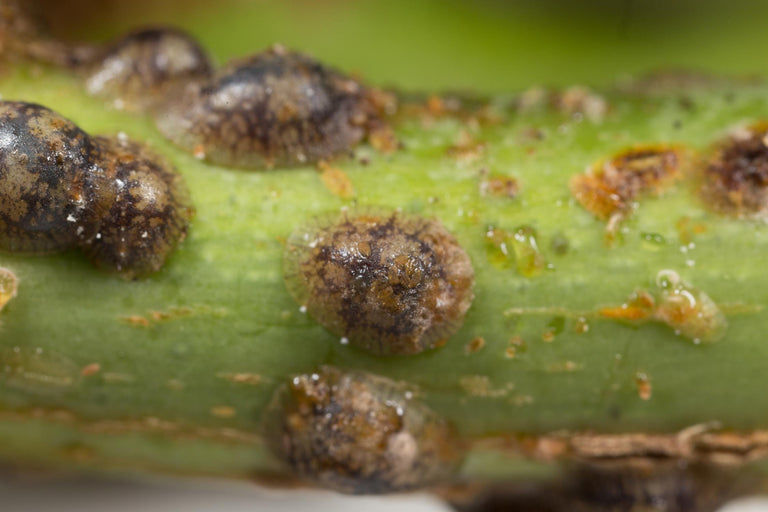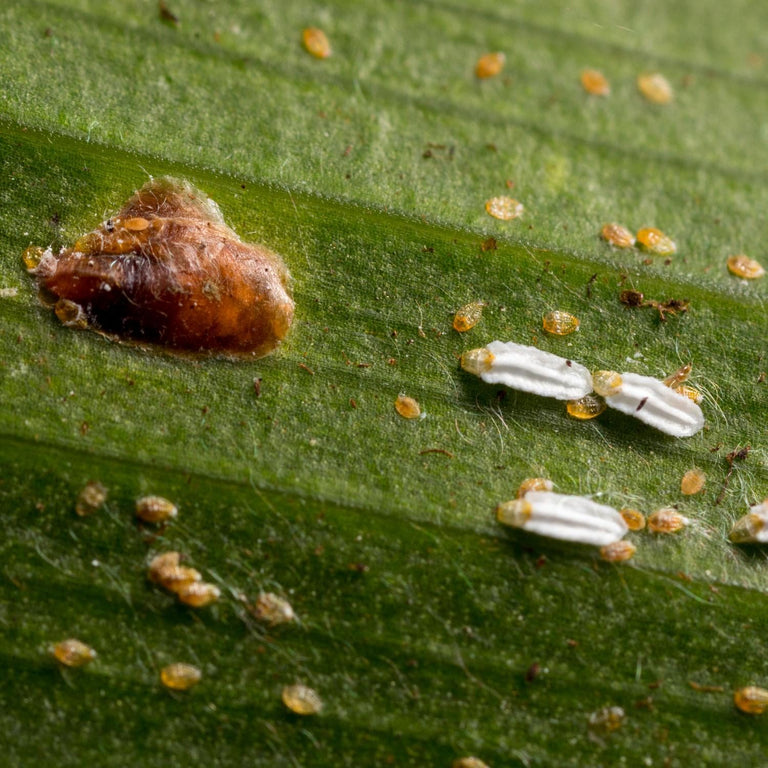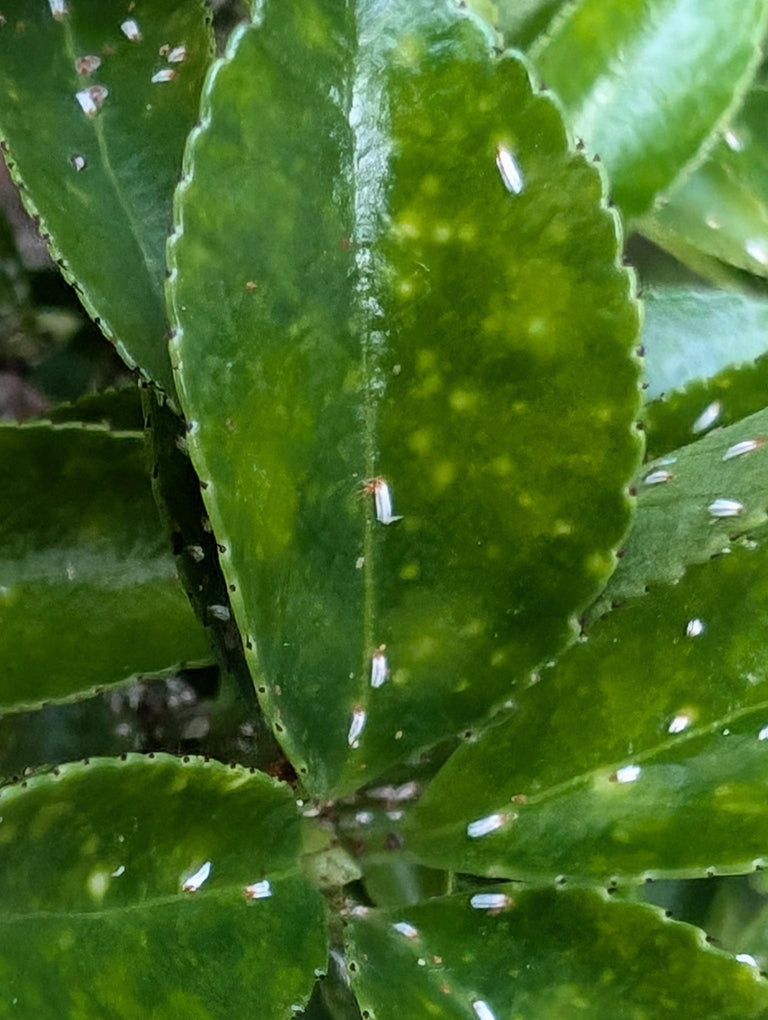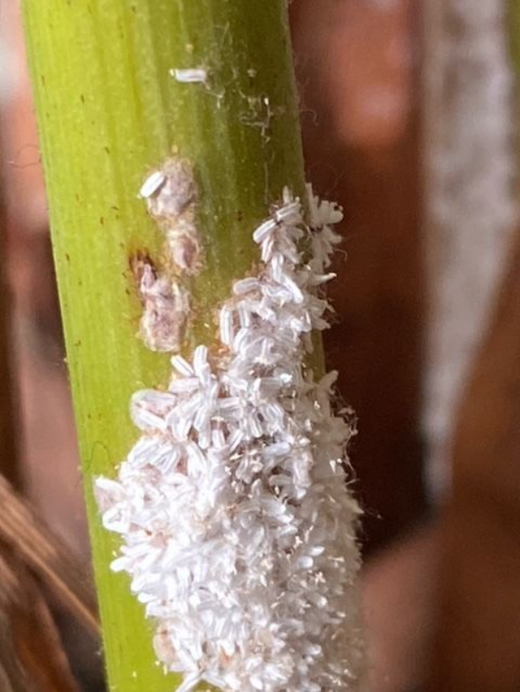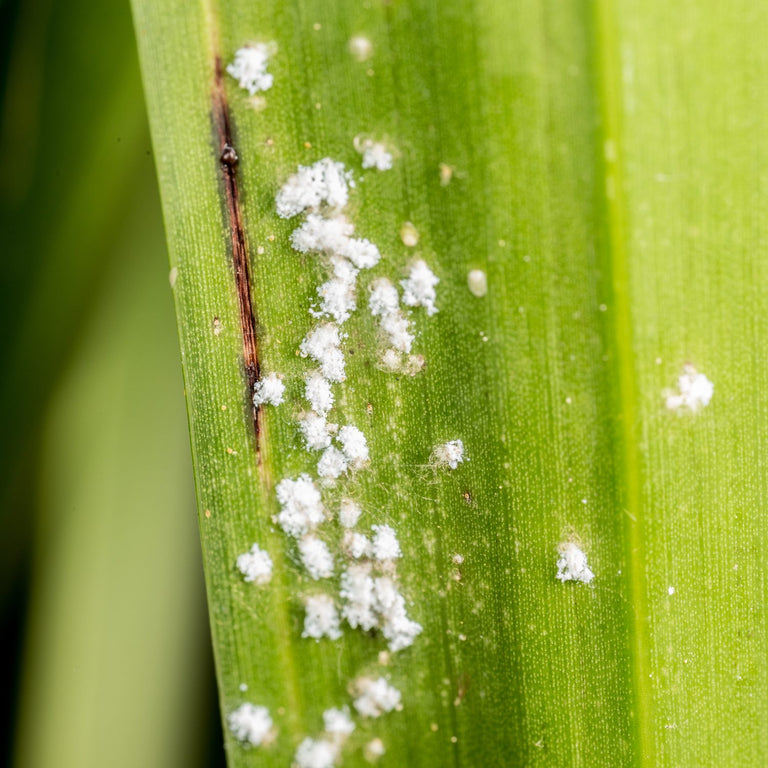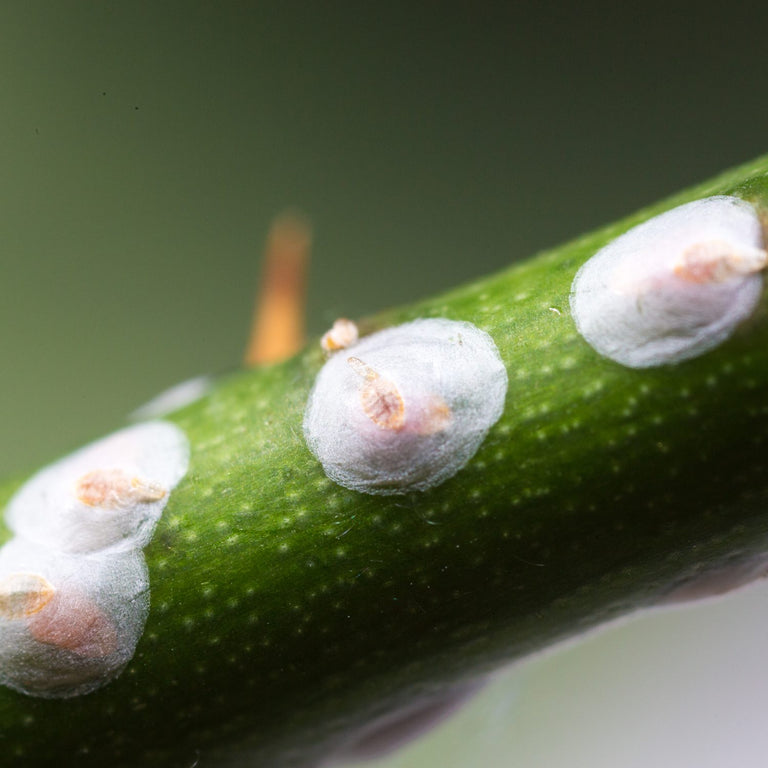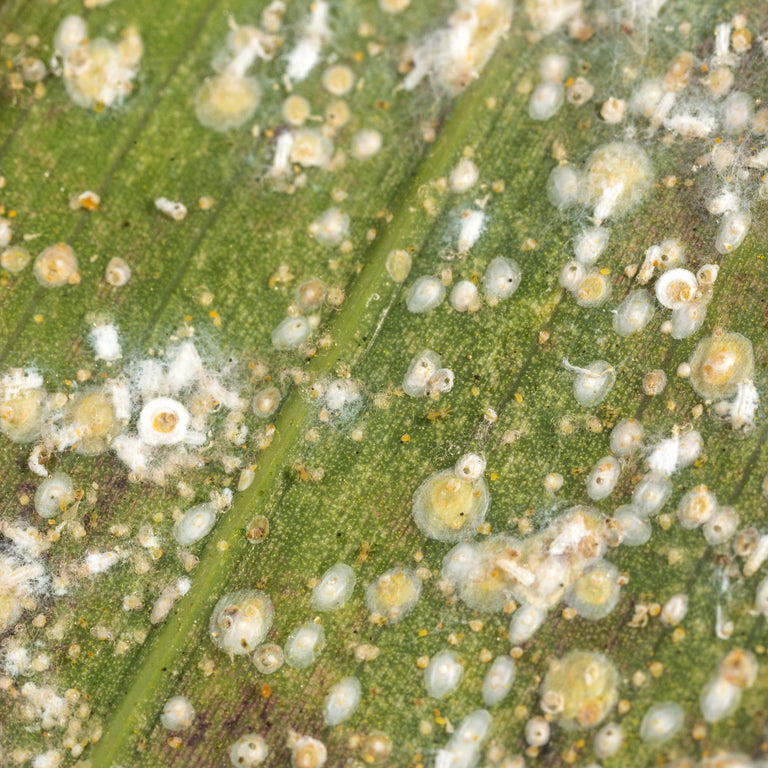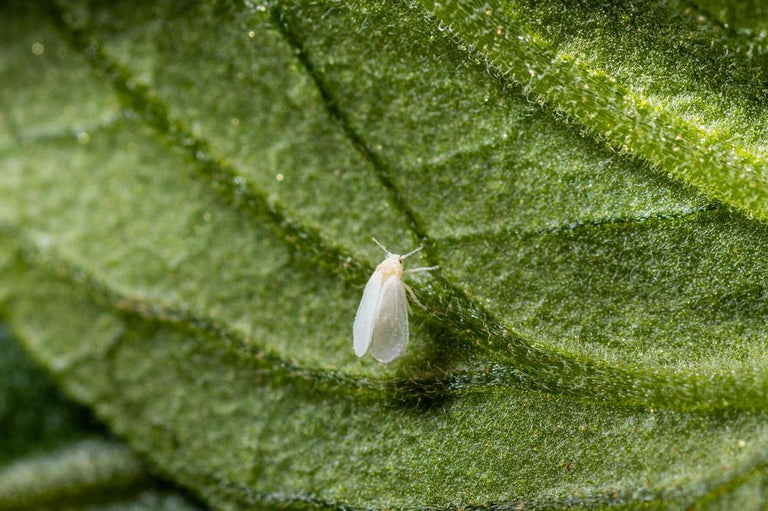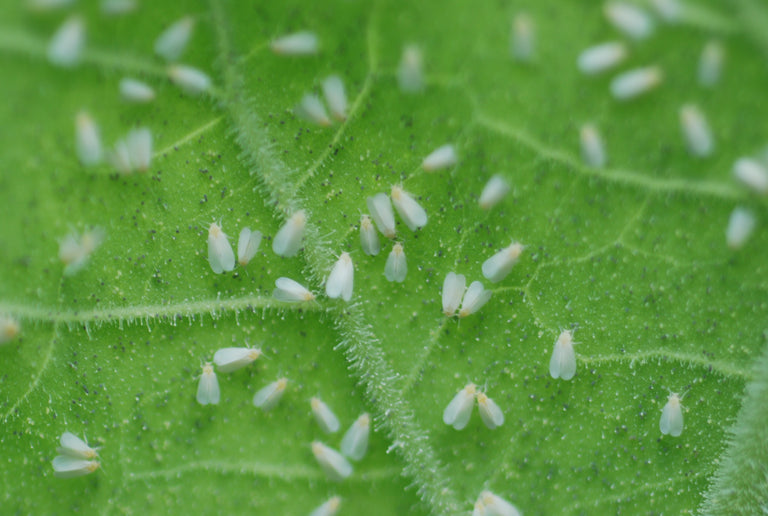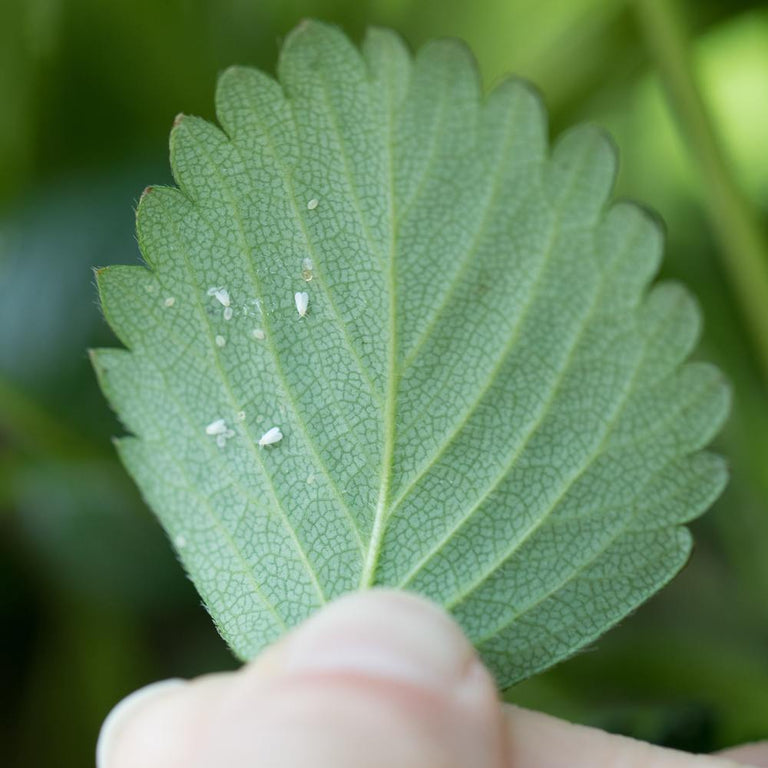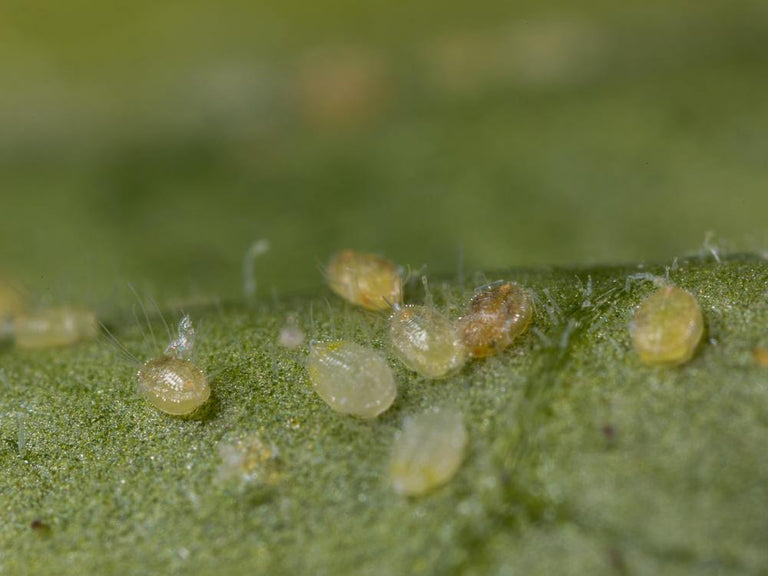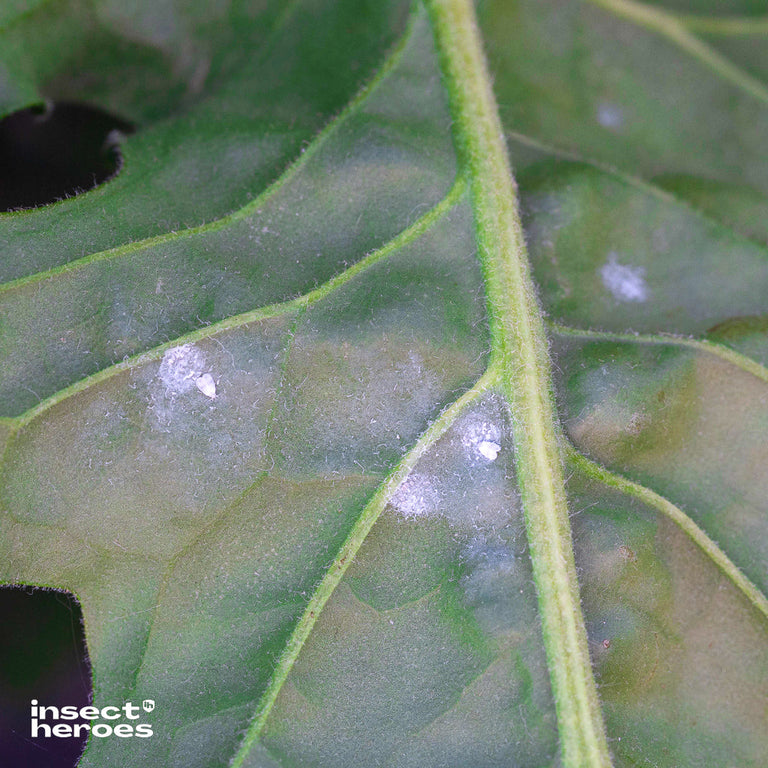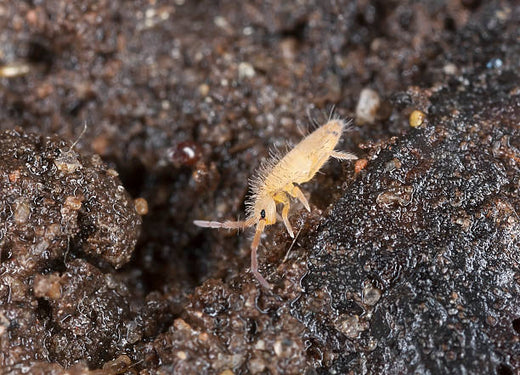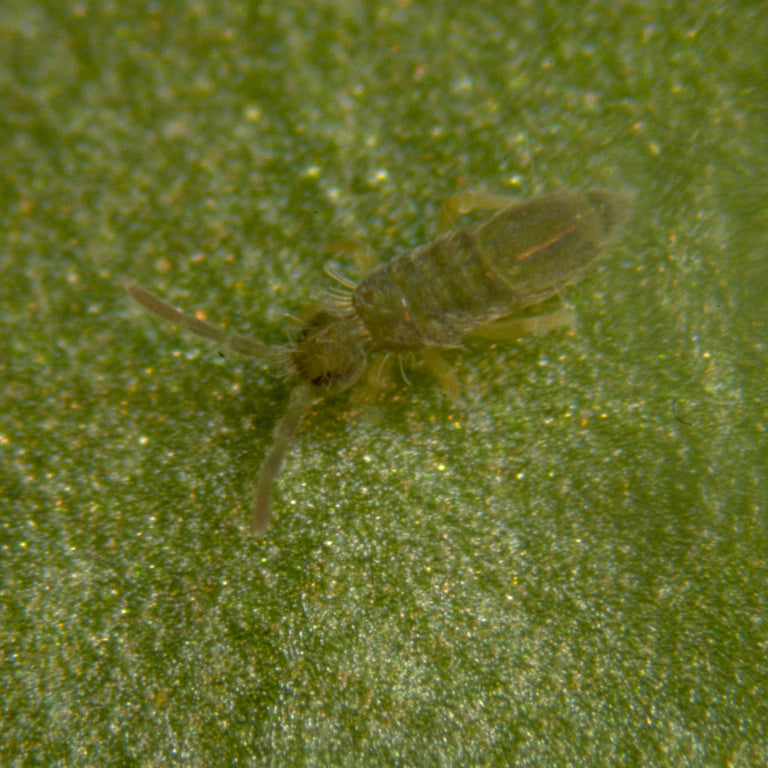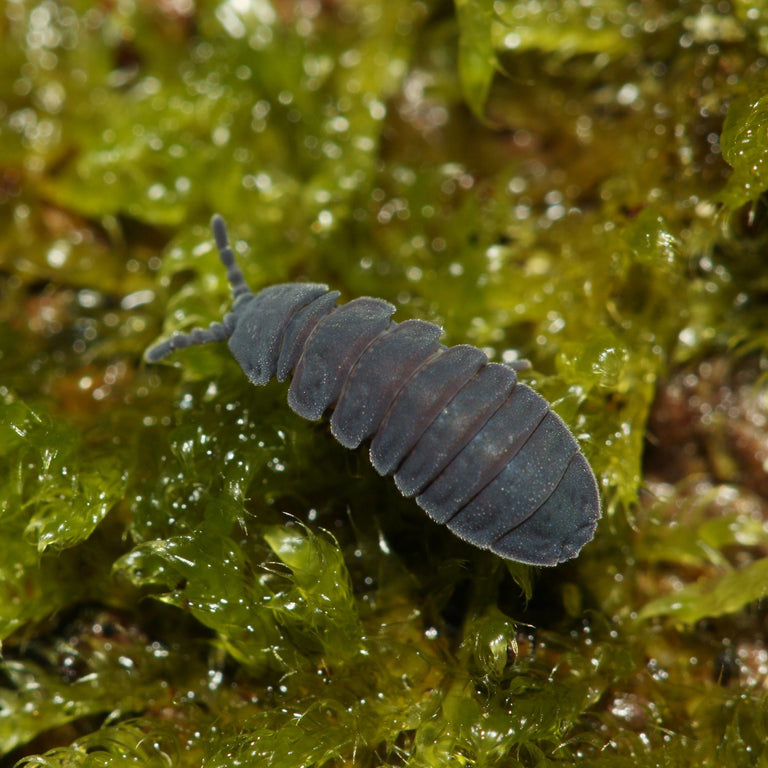Fungus gnats, also called fungus gnats, have long antennae, are dark in colour and fly quite slowly. They are up to 3 mm in size and can be seen with the naked eye. The larvae live in the potting soil and are transparent with a black head.
Adult thrips have an elongated body with small ragged wings and are 1 to 2 mm in size. They are often yellow, brown or black in colour. Thrips causes silver-grey to brown spots on leaves. In the grey spots you can see black dots, the excrement of thrips.
Spider mites are small, round creatures that look like spiders or ticks and are up to 0.5 mm in size. They can have different colours, such as brown, red and green. Spider mites cause yellow spots on the leaves of plants and make webs between the leaves.
Aphids are small, round insects in various colours (green, black, brown, red). They often sit in groups on the underside of leaves or stems and can grow wings to spread quickly. White molts and sticky leaves, which attract ants, are signs of aphids.
You can recognize mealybugs by the fluffy white spots near the veins of the leaves. Under the waxy threads are small white to light pink creatures of 4-5 mm in size. The leaves can feel sticky because of honeydew, a sugary substance that the mealybugs excrete.
Scale insects females have a shield that is fused to their body. Because they do not move, you can hardly see that you are dealing with an insect. Scale insects produce honeydew, which makes the leaves of plants sticky.
Scale insects also hide under a shield, but unlike the scale insect, this can be lifted off the body of the scale insect. The scale insect does not produce sticky honeydew, unlike the scale insect.
Whitefly is a small insect of about 3 mm in size with white, powdery wings. As soon as you shake the plant, the creatures fly up. The larvae of whitefly are transparent in color, and sit on the underside of the leaf.
Springtails can be recognized by their small, white or gray bodies and their jumping movement. They live in the potting soil and are generally harmless to the plant. In fact, they are often useful because they help break down organic matter and improve the soil structure.
Is your plague not listed?
Not sure which pest is bothering you? Upload a clear and sharp photo of the pest and we will see if we can find the pest and solution for you!










































